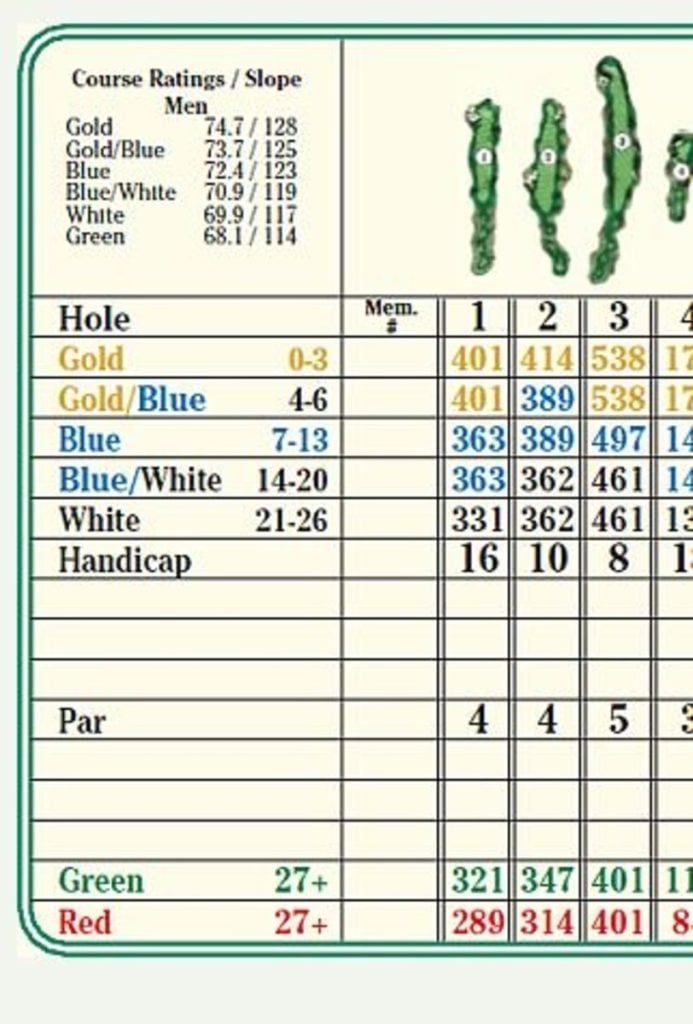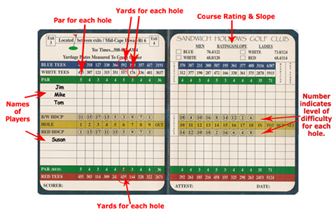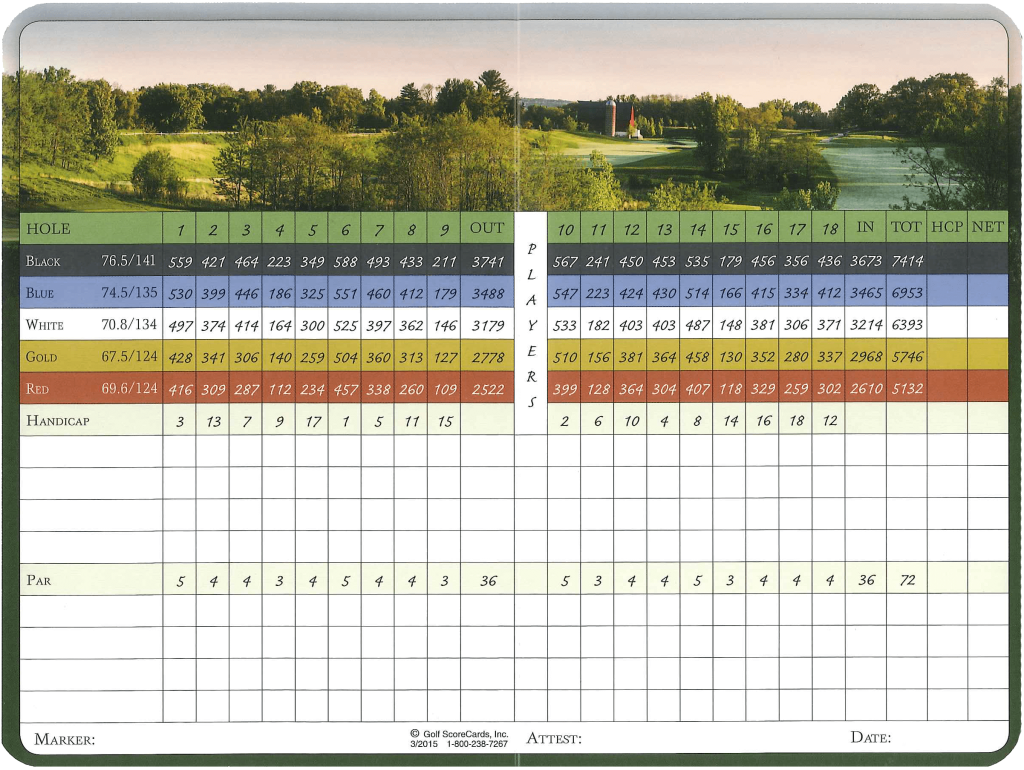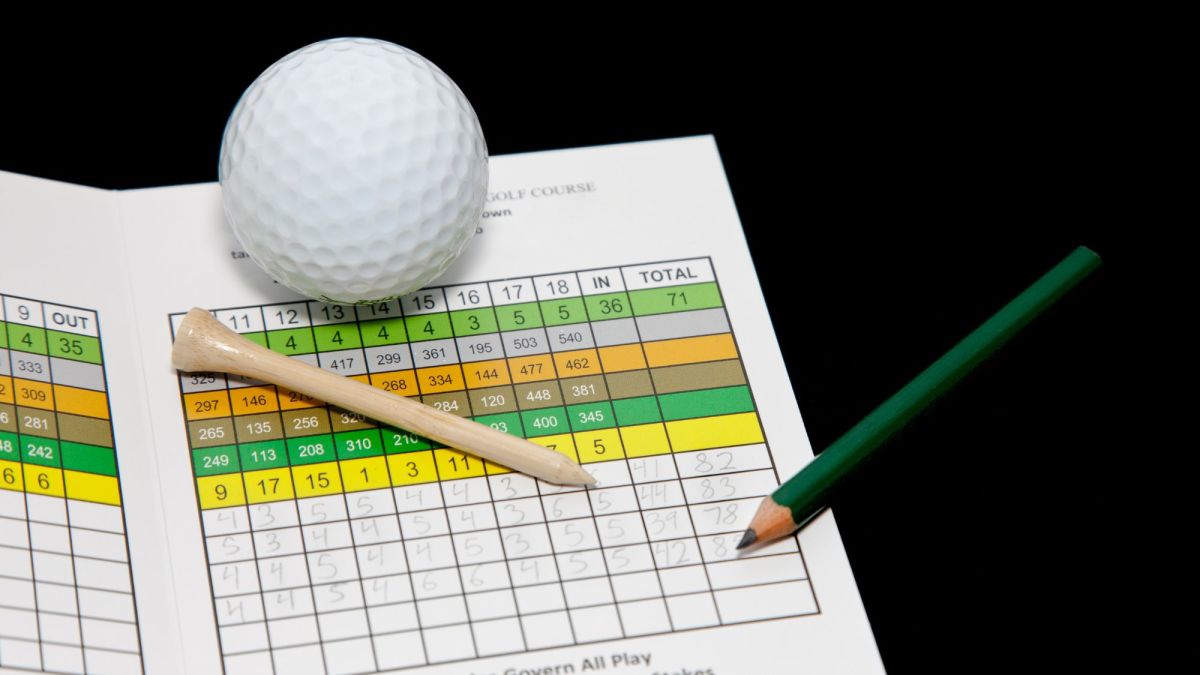How to Read a Golf Scorecard: A Beginner’s Guide to the Links
Key takeaway:
- Understanding how to read a golf scorecard is important for golfers to track their progress and make informed decisions on the course.
- A golf scorecard consists of various components, including hole numbers, tee box colors and yardages, par numbers, handicap and stroke index, course rating and slope rating, and score recording symbols.
- To effectively use a golf scorecard, golfers should practice scorecard management, consider using scorecard apps for convenience, and pay attention to the game format being played.
Introduction
Understanding how to read a golf scorecard is crucial for any avid golfer. In this section, we will explore the importance of this skill and how it can greatly enhance your golfing experience. From comprehending various terms and symbols to tracking your progress throughout a round, mastering the art of reading a golf scorecard unlocks valuable insights into your game and helps you make informed decisions on the course. So let’s dive in and uncover the significance of this fundamental aspect of golf.
Importance of understanding how to read a golf scorecard
Golfers must understand how to read a scorecard. It provides info about the course layout, yardages, par numbers, handicaps, and score recording symbols. Knowing all this helps players decide which clubs to use, what shots to take, and how to manage their game. It also enables them to keep track of their scores accurately.

A scorecard has several components. The hole numbers and layout give the sequence and divide the holes into front and back 9. Tee box colors show the different starting points. Yardages allow golfers to judge the distance they must cover. Par numbers help assess a golfer’s performance on each hole. Handicap and stroke index tell a player’s skill level relative to the hole difficulty. Course rating and slope rating indicate the overall difficulty of the course.
When recording scores, it’s important to understand the symbols used for birdies, pars, bogeys, etc. This helps players track their progress and analyze their strengths and weaknesses. Keeping scorecards accurate helps avoid mistakes that could lead to disqualification.
Components of a Golf Scorecard
A golf scorecard is made up of several key components that provide vital information during a round of golf. From the hole numbers and layout to the tee box colors and yardages, each detail plays a crucial role in navigating the course. Additionally, the par numbers, handicap and stroke index, course rating and slope rating, as well as the score recording and symbols, offer valuable insights for players. Understanding these components is essential for effectively tracking and analyzing scores on the golf course.

Hole Numbers and Layout
Extra features on some scorecards could be visual representations or descriptions of potential hazards. This could help players plan their round.
Pro Tip: Study the layout before starting. Plan your game based on distances, pars, and potential hazards. This improves performance and helps make informed decisions during the game.
Tee Box Colors and Yardages
Tee box colors and yardages have a critical role in reading a golf scorecard. The colors show the various tee boxes, each with a different level of challenge. The yardages on the card tell players how long each hole is, helping them decide which club to use.

It is worth noting that tee box colors and yardages are different for each golf course. Some courses may have different color schemes or extra tees. Beginner golfers may have forward tees, while advanced golfers might have championship tees. Also, scorecards may have extra notes or markings to guide you on specific holes or course features. These details help you understand how tee boxes and yardages affect your game.
In conclusion, tee box colors and yardages are important for golfers to plan their shots. They show the difficulty level of each tee box and the hole lengths. A table helps you quickly find the right tee box and understand the course. Remember that tee boxes and yardages vary from course to course, giving more options for all skill levels. Special notes and markings on the scorecard help you understand how tee boxes and yardages influence your golf game, making it more enjoyable.
Par Numbers
Par numbers in golf scorecards stand for the amount of strokes a skilled golfer is assumed to take on a hole. Every hole on a golf course has a specific par number that is set based on its length and difficulty level. This number usually goes from 3 to 5, with many holes being par 4. This gives players an idea of how many strokes they need to aim for to match the expected standard of play.
The table below explains the three types of par numbers:
| Par Number | Description |
| Par 3 | The shortest holes on the course. It usually only needs one good shot. |
| Par 4 | Moderate-length holes. They need accurate tee and approach shots. |
| Par 5 | The longest holes, often needing three shots to reach the green. |
Par numbers also help with computing handicaps and net scores. By comparing their actual score to the par number, golfers can see if they played better or worse than expected for each hole. This helps them to spot any strengths and weaknesses in their game, as well as monitor their progress over time.
Did you know that the idea of assigning par numbers to golf holes was first suggested by Allan Robertson, a famous Scottish golfer from the early 19th century? His system for categorizing holes based on their length and difficulty changed the way golf courses were designed and made it possible to evaluate players’ performance using a standard method.
Handicap and Stroke Index
Let’s take a look at the Handicap & Stroke Index system. The Handicap column represents different handicaps for players. The Stroke Index column shows the difficulty of each hole on the golf course, with lower numbers indicating higher difficulty.
It’s important to understand how these figures impact gameplay. For example, if you have a handicap of 10 and your opponent has 15, you’ll get strokes on five holes based on their respective stroke indices. This helps balance the playing field.
Knowing your own handicap can help improve your game. It’s an objective measure of progress as you work towards reducing your handicap. Handicaps and stroke indices can vary depending on gender and age. Golf courses have separate tables for men, women, and junior golfers.
The concept of handicapping in golf originated in Scotland in the mid-18th century. It allows players of different skill levels to compete fairly. Now, this system remains an integral part of the sport.
Course Rating and Slope Rating are other numbers to consider. They matter more than your swing!
Course Rating and Slope Rating
Course Rating and Slope Rating decipher the challenge of a golf course.
Course Rating is a numerical value that shows the estimated score for a scratch golfer on a specific course. It takes into account things like hole length, hazards, and layout. Lower Course Rating means an easier course, while a higher rating signals a greater challenge.
Slope Rating reveals how difficult a course is for players with higher handicaps compared to scratch golfers. It is between 55 – 155, with 113 being average. Higher numbers mean more obstacles like uneven terrain, narrow fairways, and water hazards.
Course Rating and Slope Rating together give golfers info about a course’s difficulty for their handicap. This helps them strategize and set expectations. Plus, these ratings are standardized by golf associations, so players can compare their performance on different courses.
In conclusion, Course Rating and Slope Rating are vital elements of a golf scorecard. By understanding and considering these ratings, golfers can make better decisions about their game and assess their performance on different courses. Unlock the code of scorecard hieroglyphics and conquer the greens like a golf whisperer!
Score Recording and Symbols
Recorded scores and symbols are very important for measuring and tracking a golfer’s performance on a golf scorecard. Knowing the symbols for each hole is key. A table on the scorecard displays these symbols and what they mean.
The symbols show if the player’s score was at par, over par, or under par. Plus, there are special symbols for birdies, eagles, bogeys, double bogeys, etc. This helps golfers identify their score relative to the par.
The scorecard also has space for other info like penalty strokes. This helps players keep track and get an accurate final score.
By understanding the score recording symbols and correctly filling in the scorecard, golfers can measure their progress over time.
Tips for Using a Golf Scorecard
Discover valuable tips for optimizing your golf scorecard experience. From effective scorecard management to utilizing helpful scorecard apps, and paying attention to game format, these practical tips will enhance your understanding and performance on the golf course. Improve your game, track your progress, and make the most of every round with these expert insights.
Scorecard Management
Efficient scorecard management can be achieved through certain tools and methods. For example, a scorecard holder can be used to keep the scorecard secure. Plus, using a waterproof notepad ensures legible writing in wet weather.
An expert tip for scorecard management is to assign a certain place for the scorecard within the holder. This makes it easy to access between shots and helps maintain a good pace of play.
By following these scorecard management techniques, golfers can stay organized and concentrate on their game. This will result in better performance on the course.
Scorecard Apps
Scorecard Apps have become hugely popular with golfers of all abilities. Their user-friendly design and comprehensive features make them a must-have on the course. Whether you’re a beginner aiming to improve your game or a pro seeking an edge in competition, Scorecard Apps can give your golfing experience a boost.
In the past, physical scorecards were relied upon to track scores and performance. But with the arrival of technology, developers saw the need for digital tools that could bring more convenience and precision. Thus, Scorecard Apps were born. They now provide golfers with a variety of features like score tracking, stats analysis and GPS mapping. These apps are invaluable for boosting game improvement and making golfing smoother.
Paying Attention to Game Format
Golf relies on game formats, such as stroke play or match play, to set rules and parameters. Stroke play requires players to count their strokes per hole, with the lowest overall score winning. Match play pits players against each other, with the most hole wins securing the victory.
It is essential to be aware of any extra rules or variations, like handicaps, penalties, or restrictions. Knowing the game format allows for strategic decisions and an enjoyable experience.
Importance of Accuracy in Scorecard Filling
Accuracy when filling scorecards is essential in golf. A scorecard serves to record a golfer’s performance. It tracks scores and stats in a round. Filling out a scorecard precisely ensures that scores are correct and reflect the golfer’s aptitude on the course.
Attention to detail is a must when filling a scorecard. Every hole’s score, including the number of strokes and any penalty strokes, must be noted accurately. Additionally, the golfer’s name, date, and course details should be filled in precisely. Errors or inaccuracies in a scorecard can affect a player’s score and standing in a tournament.
Accuracy with scorecards is essential not just for individual players, but also for the fairness of the game. Tournament officials use accurate scorecards to figure out winners, allocate prizes, and calculate handicaps. Incomplete or incorrect scorecards can lead to disputes and unfair outcomes. Thus, it is every golfer’s responsibility to fill out scorecards with precision.
By highlighting the importance of accurate scorecard filling, golfers preserve the fairness of the game and ensure fair competition. Properly filled scorecards allow for tracking of performance, comparison between players, and enjoyment of the sport. Every golfer should recognize the significance of meticulous scorecard filling and approach this task carefully.
Conclusion
The article reveals why understanding the components and structure of a scorecard is so important. With this knowledge, players can navigate their way through the golf course and track their scores.
To sum up, the article provides essential insights into understanding a golf scorecard. Following these guidelines helps players to interpret scorecards accurately and enhance their performance.
Some Facts About How To Read a Golf Scorecard:
- ✅ A golf scorecard is used to keep track of scores during a round of golf. (Source: Team Research)
- ✅ Par numbers indicate the ideal number of strokes to clear each hole, with par 3, par 4, and par 5 being the most common. (Source: Team Research)
- ✅ Different tee box colors indicate the starting point for each hole, with red tee being the shortest and white tee being the longest. (Source: Team Research)
- ✅ HCP or handicap refers to a player’s own handicap, while each hole also has a handicap rating to rank the holes by difficulty. (Source: Team Research)
- ✅ Slope rating indicates the difficulty level of the course and can affect a player’s playing handicap. (Source: Team Research)
FAQs about How To Read A Golf Scorecard
How do I read a golf scorecard?
A golf scorecard provides important information about the course and allows you to track your score. Here are the key elements to understand:
- The hole numbers indicate the order in which the holes are played.
- The front and back nine sections divide the course into two halves.
- The color names on the side represent different tee boxes.
- The handicap section ranks the holes by difficulty.
- The par information indicates the expected number of strokes on each hole.
What do the different golf scorecard symbols mean?
Golf scorecards use symbols to represent different scores. Here is what each symbol means:
- Solid circle: Eagle or better
- Circle: Birdie
- No symbol: Par
- Square: Bogey
- Solid square: Double bogey or worse
How can a veteran golfer utilize a golf scorecard?
A veteran golfer can use a golf scorecard to strategize their game. They can analyze the handicap, par, and yardage of each hole to determine the best approach. Additionally, they can use the scorecard to keep track of their score and compare it with their previous rounds.
Are there any tips for using a golf scorecard?
Yes, here are some tips for using a golf scorecard effectively:
- Use a scorecard holder to protect the card.
- Fill out scores after each hole to avoid confusion.
- Have a waterproof notepad for rainy conditions.
- Consider using a golf scorecard app for more efficiency.
- Pay attention to the format of the game being played, such as stroke play or match play.
Can you share any interesting facts about golf scorecards?
Two famous disqualifications due to scorecard errors include Roberto De Vicenzo in the 1968 US Masters and Jackie Pung in the 1959 US Women’s Open. These incidents highlight the importance of being accurate and diligent when filling out a golf scorecard.
How does the handicap system affect a golf scorecard?
The handicap system allows players of different skill levels to compete against each other. It determines the number of extra strokes a player receives based on their handicap. This information is recorded on the scorecard and used to calculate the net score, which is the score adjusted for handicap.






